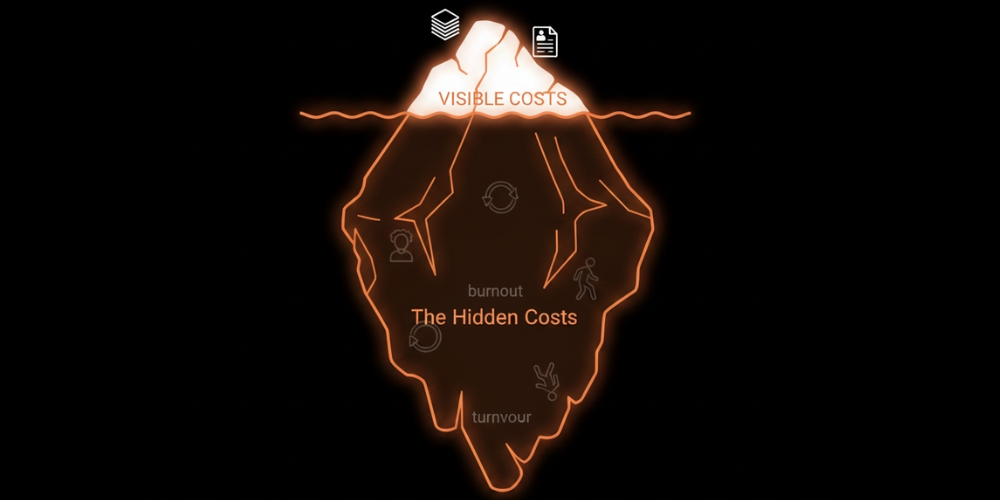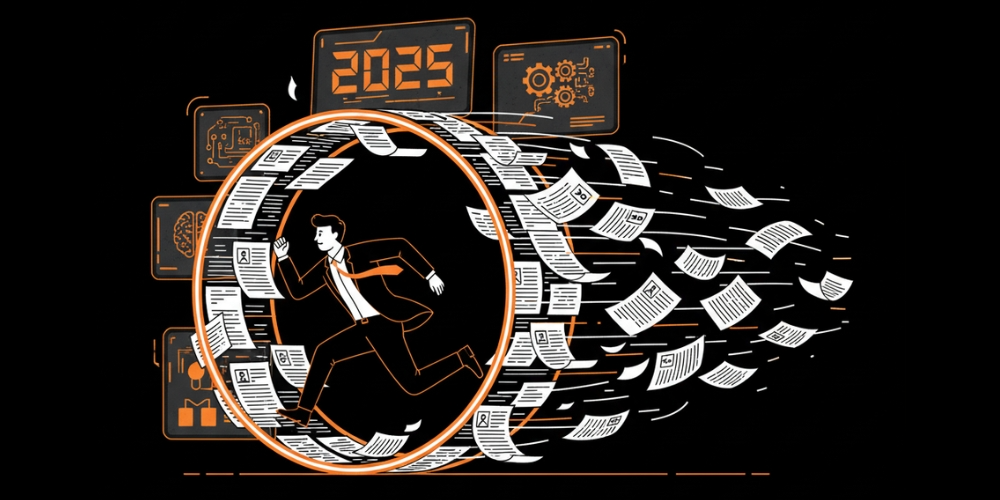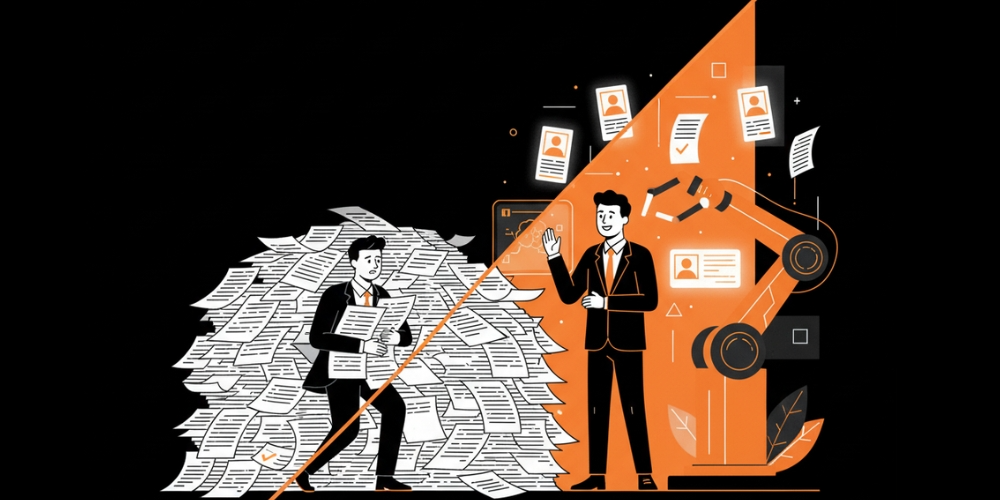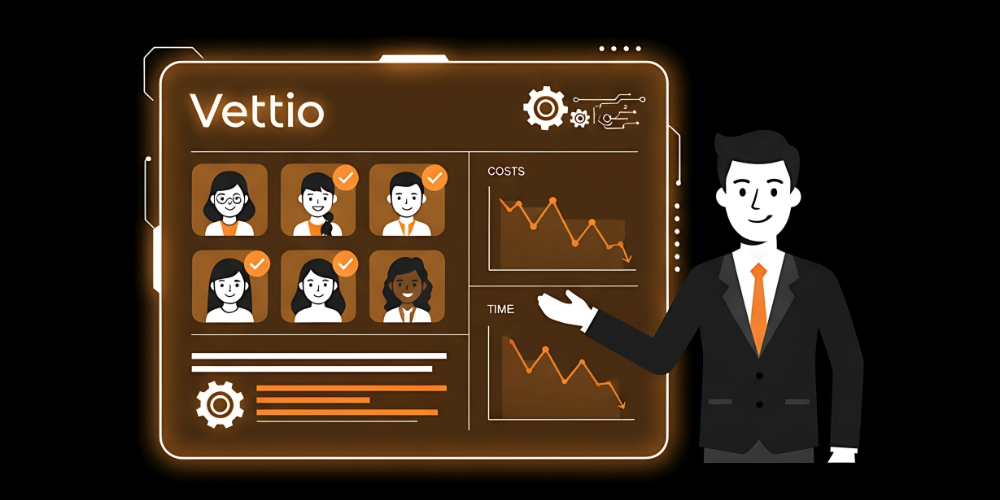How Much Manual Recruitment Screening Really Costs

TL;DR
- Manual recruitment screening eats time, money, and energy in ways many don’t see
- Direct costs include recruiter hours, tools, and administrative overhead
- Hidden cost of screening appears in delays, poor experience, and lost output
- Scaling manual screening is nearly impossible at volume
- Automation and AI in recruitment offer a smarter, leaner alternative
Every HR team dreams of the perfect hire. But what if the cost to find that person is draining your resources before they ever walk in the door? Manual recruitment screening may look cheap on paper, but its real toll shows up in hours lost, errors made, and staff who burn out under the weight of repetitive tasks.
What if there’s a smarter route? By adopting tools that automate and assist screening, you can slash costs, trim time-to-hire, and let your recruiters focus on judgment and relationships. Keeping this in mind, this blog will break down the true price of manual screening and how you can replace it with something better.
What Is Manual Recruitment Screening?

Manual recruitment screening is the process of having humans read, filter, and evaluate candidate resumes, cover letters, and other application materials by hand. Usually, this means a recruiter or hiring manager opens each resume, checks for keywords or experience, sorts them into “yes/maybe/no” piles, and follows up.
Often, manual screening also includes scheduling interviews by hand, answering candidate queries, sometimes calling references, and juggling spreadsheets. In smaller hiring volumes, it works. But once volumes rise or roles multiply, the limits start flashing in red.
Manual or Automated? Quick Check
Open each row to see whether the task belongs to manual recruitment or automation.
Reading 250 resumes and sorting them into yes / maybe / no Manual
Emailing each candidate one by one to schedule interviews Manual
Auto-shortlisting based on skills matched to the job description Automated
Parsing resumes into structured candidate profiles Automated
Manually sending status updates and rejections Manual
Bulk-updating candidate stages inside the ATS Automated
The Direct Costs of Manual Screening

When you peel back the curtain, manual screening has costs you can clearly measure. Here are some:
Recruiter & staff hours
Every minute a recruiter spends reading a resume is a minute they cannot spend on high-value tasks. Reports suggest recruiters may spend 30–90 seconds per resume in initial scans. Some sources say as much as 23 hours per opening are spent on resume screening and related admin work.
Tools, software and infrastructure
Even manual screening often uses tools: Excel sheets, email systems, job boards, and applicant tracking systems (ATS). Licenses, hosting, maintenance, and training all cost money.
Communication & follow-ups
Each email sent to candidates, each phone screening or scheduling dialogue has a cost. Multiply that by hundreds of candidates, and the communication alone becomes nontrivial.
Opportunity cost
The time recruiters spend screening is time they can’t spend sourcing, nurturing candidate relationships, improving employer brand, or crafting better job descriptions. That lost potential is a real cost.
Estimate Your Manual Screening Cost
Enter a few quick details below to calculate how much your manual recruitment screening costs each month.
Your estimated manual screening cost per month is:
Now imagine saving 60% of that with automation.
The Hidden Costs Most Companies Miss

These are costs that don’t always show up in your budget line, but they erode your margins and your team’s morale.
Longer time-to-hire and lost productivity
When manual screening slows things down, roles stay vacant longer. That vacancy has a cost: lost output, overworked teammates, missed deadlines.
Candidate drop-off and brand damage
Slow responses and inconsistent communication frustrate candidates. In competitive markets, 58% of candidates decline offers due to poor candidate experience. That translates into lost talent and damaged reputation.
Turnover among recruiters/recruiter burnout
When screening becomes a grinding, repetitive burden, burnout creeps in. One study found 53% of recruiters experienced burnout in the past year. Burnout leads to turnover, which then forces you to rehire and retrain, and increases your cost.
Bad hires & rework
A hidden cost: you may hire someone who seems okay on paper but turns out to be a mismatch. The cost of a bad hire (training, lost productivity, rehiring) can be 1.5–2× their salary.
Misalignment and decision delays
Without structured evaluation, interviewers might disagree or delay feedback. That leads to indecision, repeated rounds, or restarting screening. Small delays escalate into big costs.
Lack of data and analytics
Manual processes often produce little usable data. You can’t spot bottlenecks, compare methods, or improve. That makes your hiring inefficient.
Why Manual Screening Isn’t Scalable in 2025

The hiring world of 2025 moves faster than ever. Job postings can attract hundreds of applications within hours. Yet many companies still rely on manual recruitment screening, which is a process that simply can’t keep up.
Recruiters face high application volumes, hybrid work demands, and tight deadlines. Reading every resume by hand becomes a nightmare.
Manual screening also slows down hiring. The longer a position stays open, the higher the risk of losing top talent to faster competitors. By the time a recruiter finishes sorting one pile, another wave of applications has arrived.
That’s why businesses that depend on manual screening often find themselves caught in a loop: overworked teams, delayed decisions, and rising costs. Simply put, the old way no longer scales with modern hiring.
Why Manual Screening Isn’t Scalable in 2025
Watch how manual recruitment struggles to keep up. The recruiter reads one resume at a time while AI sorts hundreds in seconds.
How Automation and AI in Recruitment Reduce Screening Costs

Automation means giving recruiters time to do meaningful work. With AI in recruitment, companies can now screen thousands of resumes in minutes while improving accuracy.
AI tools instantly identify relevant skills, qualifications, and even culture fit indicators. They flag the best matches and eliminate repetitive sorting tasks that cause recruiter burnout.
Automation also enhances fairness. By evaluating all applicants consistently, AI helps minimize bias that often slips through in human-only review. The result? Better candidates move forward faster, recruiters stay focused, and companies save both money and reputation.
Even small improvements in screening speed multiply into huge gains. Imagine saving an hour per job opening across hundreds of roles. That’s weeks of recruiter time reclaimed for strategy, interviews, and human connection.
How Automation and AI Reduce Screening Costs
Click any card to flip and compare the difference between Before AI and After AI screening.
Before AI
After AI
Before AI
After AI
Before AI
After AI
Before AI
After AI
How Vettio Helps Recruiters Save Costs

Vettio was built to solve exactly this problem. It is designed to help recruiters escape manual screening overload without losing control of the process.
Here’s how Vettio helps:
- Smart automation that scans every resume in seconds while highlighting key skills and experience.
- Customizable filters to fit your unique hiring criteria and priorities.
- Candidate experience tools that ensure every applicant feels acknowledged and informed, not ignored.
By replacing repetitive screening with intelligent automation, Vettio reduces costs on both sides, such as financial and emotional costs. Recruiters spend less time buried in resumes and more time building relationships, improving hiring outcomes, and protecting team wellbeing.
Conclusion
The message is clear. Manual recruitment screening drains time, money, and morale. While it might feel safer or more “hands-on,” the hidden costs pile up fast, resulting in missed opportunities, delayed hires, and burned-out teams.
Automation and AI are no longer futuristic ideas; they’re the tools keeping modern recruiters ahead. Platforms like Vettio free recruiters to do what humans do best: connect, evaluate, and make great hiring decisions.
FAQs
How much time do recruiters spend manually screening resumes?
Recruiters often spend hours each day reading resumes, with most spending less than a minute per application. When hundreds of resumes arrive, that quickly adds up to several workdays per role.
How does AI reduce the cost of screening candidates?
AI automates repetitive screening, shortens time-to-hire and reduces the need for overtime or extra staff. It helps identify top candidates faster and ensures hiring decisions are consistent and data-driven.
Can automation improve candidate experience compared to manual screening?
Yes. Automated systems keep candidates updated in real time, prevent delays and ensure no one is ignored. This helps candidates feel valued while reducing frustration with slow or unclear hiring communication.






